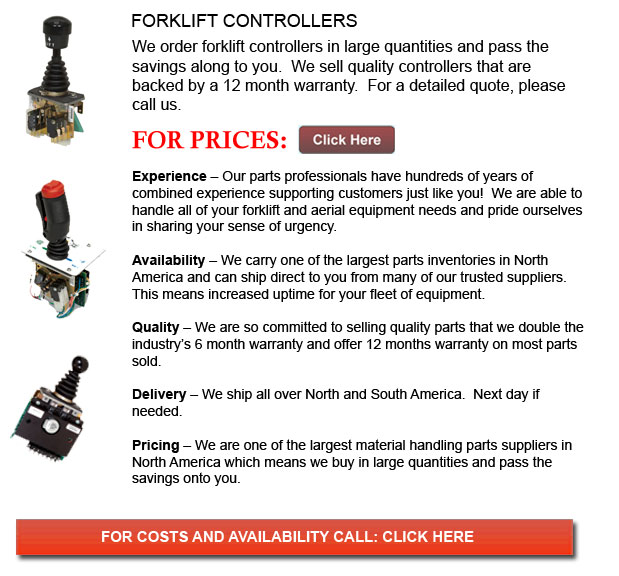
Forklift Controllers - Lift trucks are accessible in many other models which have different load capacities. Nearly all typical forklifts utilized inside warehouse environment have load capacities of one to five tons. Larger scale models are utilized for heavier loads, like for instance loading shipping containers, could have up to 50 tons lift capacity.
The operator could utilize a control to be able to raise and lower the forks, which are likewise known as "forks or tines." The operator could even tilt the mast in order to compensate for a heavy load's propensity to angle the tines downward to the ground. Tilt provides an ability to operate on bumpy ground also. There are annual contests intended for experienced lift truck operators to compete in timed challenges as well as obstacle courses at local lift truck rodeo events.
Forklifts are safety rated for loads at a particular limit weight as well as a specified forward center of gravity. This essential information is supplied by the maker and located on a nameplate. It is essential loads do not exceed these details. It is illegal in numerous jurisdictions to tamper with or take out the nameplate without getting permission from the forklift maker.
Most forklifts have rear-wheel steering to be able to enhance maneuverability. This is particularly helpful within confined spaces and tight cornering spaces. This particular kind of steering varies rather a bit from a driver's first experience together with various motor vehicles. In view of the fact that there is no caster action while steering, it is no needed to apply steering force in order to maintain a continuous rate of turn.
Instability is one more unique characteristic of lift truck use. A constantly varying centre of gravity takes place with each movement of the load amid the lift truck and the load and they need to be considered a unit during operation. A forklift with a raised load has centrifugal and gravitational forces which can converge to result in a disastrous tipping accident. To be able to prevent this possibility, a lift truck should never negotiate a turn at speed with its load elevated.
Forklifts are carefully designed with a certain load limit intended for the tines with the limit lessening with undercutting of the load. This means that the freight does not butt against the fork "L" and will lower with the rise of the fork. Normally, a loading plate to consult for loading reference is positioned on the lift truck. It is dangerous to use a lift truck as a personnel hoist without first fitting it with certain safety devices like for example a "cherry picker" or "cage."
Forklift use in warehouse and distribution centers
Lift trucks are an essential component of warehouses and distribution centers. It is significant that the work environment they are situated in is designed to accommodate their efficient and safe movement. With Drive-In/Drive-Thru Racking, a lift truck should go inside a storage bay that is several pallet positions deep to put down or take a pallet. Operators are normally guided into the bay through rails on the floor and the pallet is positioned on cantilevered arms or rails. These tight manoeuvres need skilled operators so as to do the task safely and efficiently. Since each pallet requires the truck to go in the storage structure, damage done here is more common than with various kinds of storage. If designing a drive-in system, considering the dimensions of the fork truck, including overall width and mast width, must be well thought out in order to be certain all aspects of an effective and safe storage facility.
![]() Click to Download the pdf
Click to Download the pdf
Forklift Parts
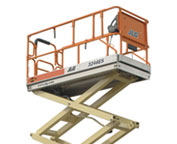
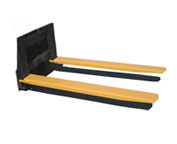
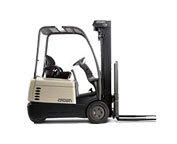
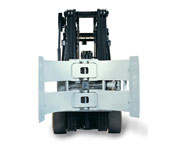
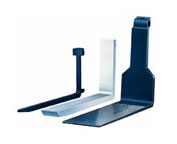
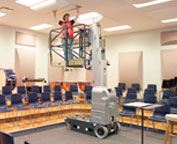
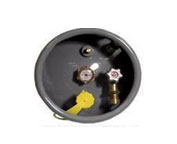
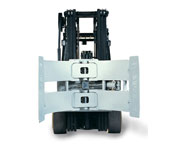
Lift Parts Express
TOLL FREE: 1-888-695-7994
LOCAL: 909-265-9036
985 KENDALL DR A-306
San Bernardino, California
forkliftpartssanbernardino.com
Email Us
About Us


